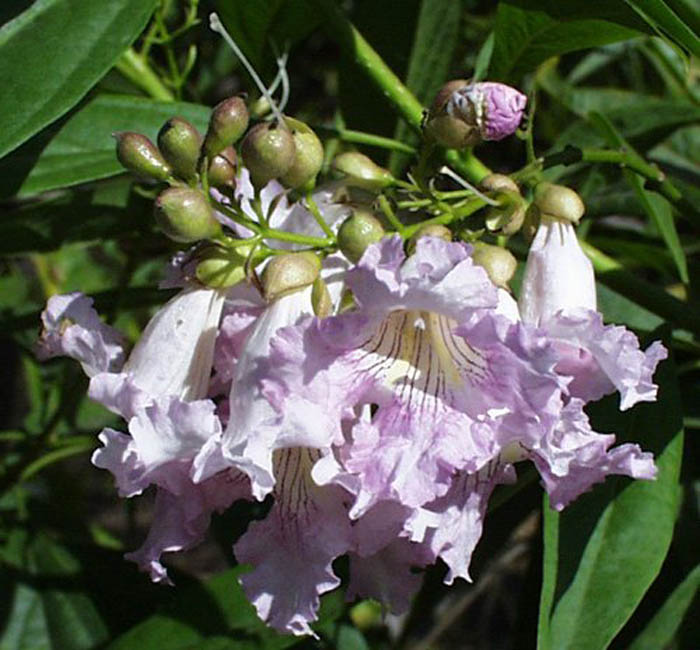Chitalpa tashkentensis
Chitalpa

Description
This medium size deciduous tree grows rapidly to 18'-25' high and wide, producing long, pointed, deep green leaves. Upon these leaves grow the pink to white trumpet shaped flowers with purple markings. Over a long season, these flowers will appear in showy clusters.
Maintenance Tips
Chitalpa tashkentensis is a naturally formed, deciduous tree that can reach 18-25' tall and wide. It is fast growing, so it is important to get on a regular pruning schedule as early as possible. The best way to ensure the success of this tree is to plant it in well-drained soil in full sun. It is considered drought tolerant, but it thrives, blooms, and reaches maturity with supplemental water. Since it has a natural form, usually with multiple trunks, pruning when it is young and the branches are weak and arching, is the key to getting the shape you want it to be. Keep the branches that are growing in the direction you would like and prune out the cross branches or branches that are headed in an undesirable direction. The majority of pruning a fast-growing tree usually occurs in the first few years. Once the tree is taking on the desired shape, the more mature branches will strengthen, and new growth will occur on these mature branches.
Plant Type
Tree
Height Range
12-25', 25-40'
Flower Color
Pink, White
Flower Season
Summer, Fall
Leaf Color
Green
Bark Color
Grey
Fruit Color
n/a
Fruit Season
n/a
Leaf Season
Deciduous
Sun
Full
Water
Low
Growth Rate
Fast
Soil Type
Sandy, Loam, Rocky
Soil Condition
Average, Poor, Well-drained, Dry
Soil pH
Neutral, Basic
Adverse Factors
n/a
Design Styles
Mediterranean, Ranch, Tropical
Accenting Features
Fall Color, Showy Flowers
Seasonal Interest
Summer, Fall
Location Uses
Background, Park, Walls / Fences
Special Uses
Shade Tree
Attracts Wildlife
n/a
Water Saving Tip:
Group plants with similar watering needs in the same area.